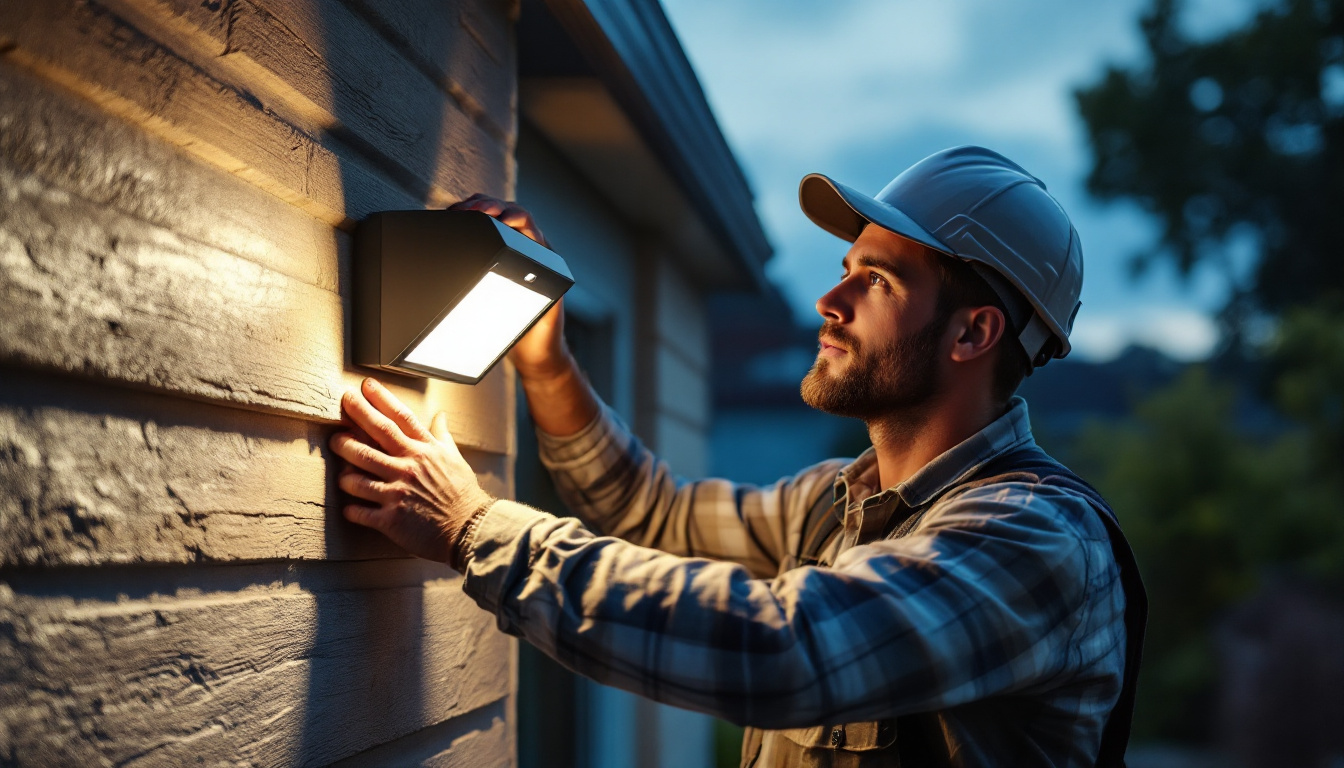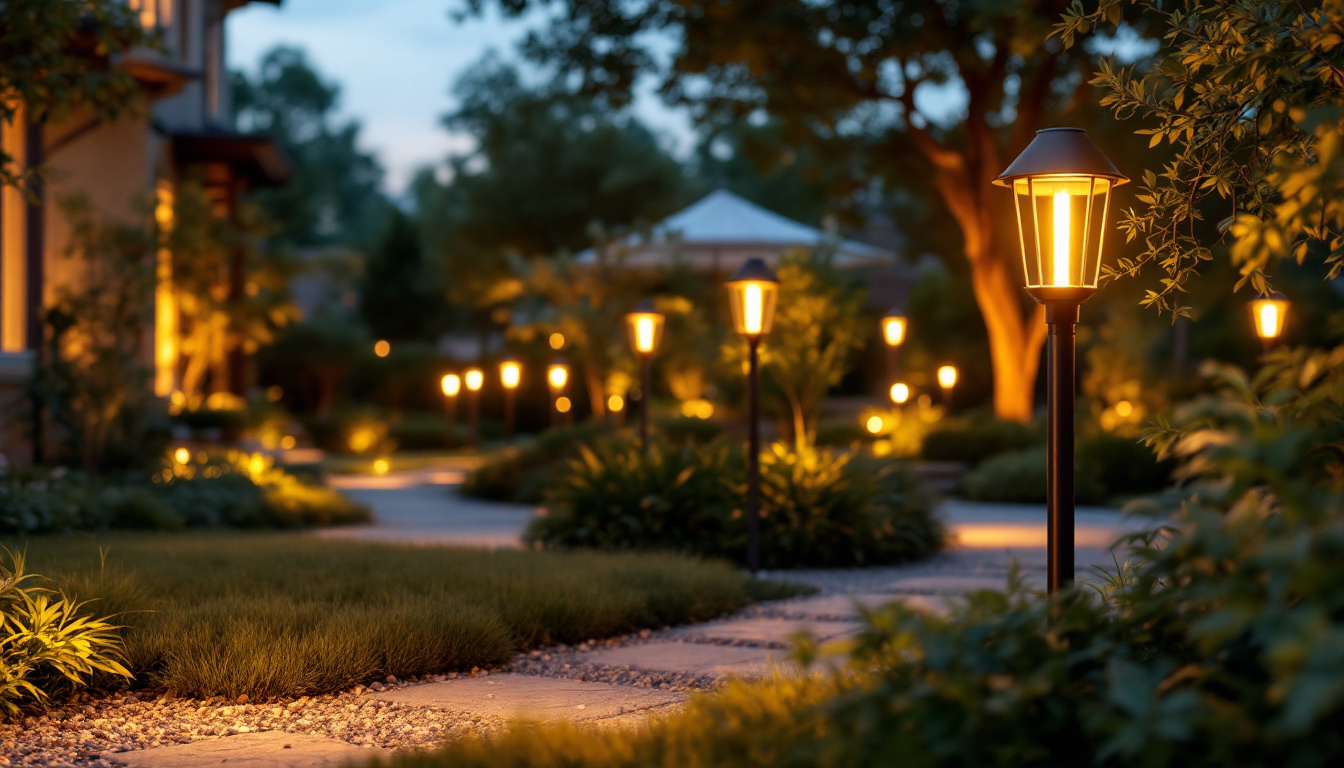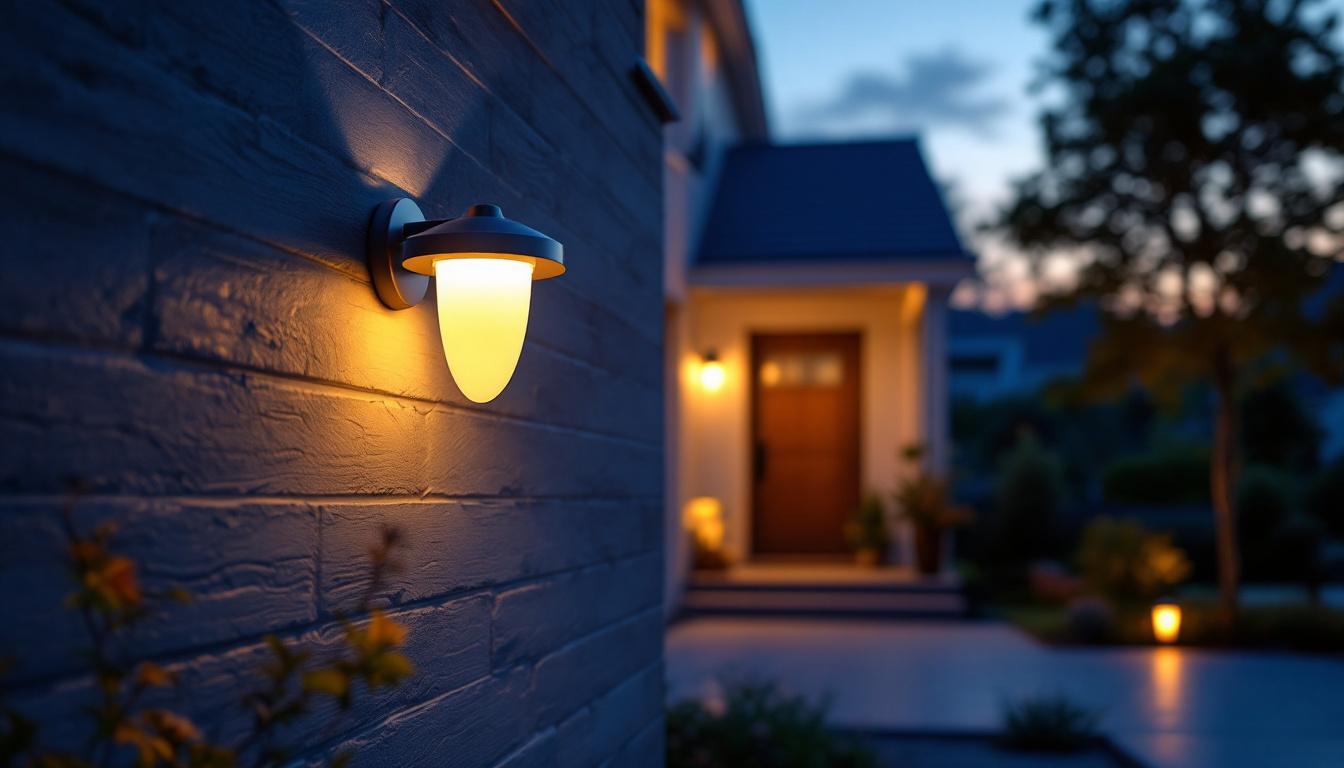
In recent years, the landscape of outdoor lighting has undergone a significant transformation, with LED technology leading the charge. Among the most notable advancements is the integration of motion sensors into LED outdoor lighting systems. This innovation is not just a trend; it represents a paradigm shift that lighting contractors must embrace to stay competitive in the market.
Motion sensors enhance the functionality of outdoor lighting, providing both convenience and security. For contractors, understanding the benefits and applications of these systems can lead to improved project outcomes and increased client satisfaction. This article delves into the advantages of LED outdoor lighting motion sensors and how they can revolutionize the way lighting contractors operate.
One of the primary benefits of LED outdoor lighting with motion sensors is energy efficiency. Traditional lighting systems often remain on throughout the night, consuming unnecessary energy and contributing to higher electricity bills. In contrast, motion sensor-equipped LED lights activate only when movement is detected, significantly reducing energy consumption and extending the lifespan of the lighting fixtures. This not only translates to cost savings for homeowners but also aligns with the growing demand for sustainable and eco-friendly solutions in residential and commercial spaces.
Moreover, the versatility of motion sensor technology allows for a wide range of applications. From illuminating pathways and driveways to enhancing security around homes and businesses, these systems can be tailored to meet specific needs. For instance, contractors can install adjustable sensitivity settings, allowing clients to customize how the lights respond to movement. This adaptability makes LED outdoor lighting with motion sensors an ideal choice for various environments, from residential properties to public parks and commercial complexes, ensuring safety and enhancing the overall aesthetic appeal of outdoor spaces.
Motion sensors come in various types, each with unique features and applications. The most common types include passive infrared (PIR) sensors, microwave sensors, and dual-technology sensors. PIR sensors detect changes in infrared radiation, making them ideal for outdoor environments where temperature variations signal movement. Microwave sensors, on the other hand, emit microwave pulses and detect motion based on the reflection of these waves. Dual-technology sensors combine both PIR and microwave technologies, offering enhanced reliability and reduced false alarms.
For lighting contractors, understanding these different types of sensors is crucial. Each type has its strengths and weaknesses, and the choice of sensor can significantly impact the effectiveness of the lighting solution. By selecting the appropriate sensor for specific applications, contractors can ensure optimal performance and client satisfaction.
The operation of motion sensors is relatively straightforward. When a sensor detects movement within its designated range, it sends a signal to the connected lighting system, triggering the lights to turn on. The duration for which the lights remain on can often be adjusted based on the specific needs of the installation. This feature not only enhances energy efficiency but also ensures that the lights are only active when necessary.
Moreover, many modern motion sensors come equipped with advanced features such as dimming capabilities and adjustable sensitivity settings. These functionalities allow contractors to tailor the lighting experience to the unique requirements of each project, providing clients with a customized solution that meets their needs.
One of the most compelling advantages of LED outdoor lighting motion sensors is their energy efficiency. Traditional lighting systems often operate continuously, leading to excessive energy consumption. In contrast, LED lights equipped with motion sensors only activate when movement is detected, significantly reducing energy usage.
This energy-saving feature not only benefits the environment but also translates to cost savings for clients. As energy prices continue to rise, the demand for energy-efficient solutions is growing. By offering LED outdoor lighting with motion sensors, contractors can position themselves as forward-thinking professionals who prioritize sustainability.
Security is a primary concern for many homeowners and businesses. LED outdoor lighting motion sensors provide an effective solution by illuminating areas only when movement is detected. This sudden burst of light can deter potential intruders and enhance the overall security of a property.
Additionally, the ability to customize the sensitivity and duration settings of motion sensors allows contractors to create a tailored security solution. For instance, high-traffic areas may require more sensitive sensors, while less frequented spaces can have adjusted settings to minimize false alarms. This adaptability ensures that clients receive a security solution that meets their specific needs.
Beyond energy efficiency and security, LED outdoor lighting motion sensors offer unparalleled convenience. Homeowners and business operators no longer need to fumble for switches in the dark; lights automatically turn on when they approach, creating a seamless experience. This feature is particularly beneficial for outdoor spaces such as pathways, driveways, and entrances.
Moreover, many motion sensor systems can be integrated with smart home technology, allowing users to control their outdoor lighting remotely. This integration not only enhances convenience but also provides users with greater control over their lighting environment, making it an attractive selling point for contractors.
In residential settings, LED outdoor lighting motion sensors are ideal for illuminating pathways, driveways, and entry points. Homeowners appreciate the added security and convenience these systems provide, making them a popular choice for new constructions and renovations alike.
Moreover, the aesthetic appeal of LED lighting can enhance the overall look of a property. By incorporating motion sensors, contractors can create a functional yet visually pleasing outdoor lighting solution that meets the homeowner’s needs while also adding value to the property.
For commercial and industrial applications, the benefits of LED outdoor lighting motion sensors are even more pronounced. Businesses often require extensive outdoor lighting for safety and security purposes, and motion sensors can help reduce operational costs by ensuring that lights are only active when needed.
Additionally, in environments such as warehouses or manufacturing facilities, motion sensors can be programmed to activate lights in specific zones based on activity levels. This targeted approach not only enhances safety but also improves energy efficiency, making it an attractive option for businesses looking to cut costs.
Municipalities are increasingly recognizing the advantages of LED outdoor lighting motion sensors in public spaces. Parks, sidewalks, and parking lots can benefit from motion-activated lighting, enhancing safety for pedestrians while minimizing energy consumption.
In addition to the practical benefits, these installations can contribute to a city’s overall aesthetic and sustainability goals. By collaborating with local governments and organizations, lighting contractors can play a pivotal role in transforming public spaces into safer, more inviting environments.
While the benefits of LED outdoor lighting motion sensors are clear, contractors must also consider the complexities involved in installation. Proper placement of sensors is crucial to ensure optimal performance. Factors such as the angle of detection, range, and environmental conditions can all impact how effectively a sensor operates.
Contractors should be well-versed in the specifics of each sensor type and its ideal installation conditions. This knowledge will enable them to provide clients with the best possible solutions while minimizing the risk of issues arising post-installation.
Another consideration for contractors is the maintenance and longevity of LED outdoor lighting systems. While LEDs are known for their durability, motion sensors may require periodic checks to ensure they are functioning correctly. Regular maintenance can help identify any issues before they become significant problems, ensuring that clients receive the full benefits of their lighting systems.
Contractors should establish a maintenance plan that includes routine inspections and adjustments as necessary. This proactive approach not only enhances the performance of the lighting systems but also builds trust and reliability with clients.
The future of LED outdoor lighting motion sensors is undoubtedly tied to the rise of smart technology. As more homeowners and businesses adopt smart home systems, the demand for lighting solutions that integrate seamlessly with these technologies will continue to grow.
Contractors should stay informed about the latest advancements in smart lighting technology. By offering solutions that can be controlled via smartphone apps or integrated with home automation systems, contractors can appeal to a tech-savvy clientele and position themselves as leaders in the industry.
As technology continues to evolve, so too will the capabilities of motion sensors. Future advancements may include improved sensitivity, enhanced range, and even the ability to differentiate between types of movement. These developments will further enhance the effectiveness of LED outdoor lighting systems and provide contractors with even more options for their clients.
Staying abreast of these trends will be essential for contractors looking to remain competitive. By adopting the latest technologies, they can offer innovative solutions that meet the ever-changing needs of their clients.
LED outdoor lighting motion sensors represent a significant advancement in the field of lighting design and installation. For lighting contractors, embracing this technology is not merely an option; it is a necessity in a rapidly evolving market. The benefits of energy efficiency, enhanced security, and user convenience make these systems an attractive choice for both residential and commercial applications.
By understanding the technology behind motion sensors, recognizing their various applications, and staying informed about future trends, contractors can position themselves as experts in the field. This expertise will not only lead to increased client satisfaction but also to a more sustainable and profitable business model. As the demand for innovative lighting solutions continues to grow, those who adapt and evolve will undoubtedly thrive in the competitive landscape of lighting contracting.
Ready to harness the power of LED outdoor lighting motion sensors for your next project? At LumenWholesale, we provide lighting contractors with the cutting-edge solutions you need to stay ahead of the game. Our spec-grade lighting products are designed to deliver the perfect combination of energy efficiency, security, and convenience your clients demand. With unbeatable wholesale prices and free shipping on bulk orders, you can trust us to equip you with premium lighting at the best value. Don’t let middleman markups dim your competitive edge. Explore our selection now and light up your projects with confidence and affordability.

Discover how LED outdoor lighting with motion sensors is revolutionizing the work of lighting contractors.

Illuminate your outdoor spaces efficiently with our comprehensive checklist for solar-powered lights.

Discover how LED porch light fixtures are revolutionizing the lighting industry with their energy efficiency, durability, and innovative designs.

Discover strategies to boost your business with our comprehensive guide on lighting deals.